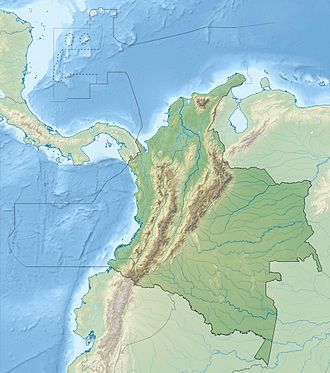Damage and casualties
At least five of Colombia's departments were affected by the earthquake. [1] In total, at least 20 houses collapsed and 252 others were damaged across the country; damage was reported as far away as Armenia, in Quindío Department. [9] Two people were killed as a result of the earthquake; a woman in Bogotá after jumping from a building and a man after an earthquake-related incident in a mine near Sativanorte. [10] [11] Both were Venezuelan nationals. [12] [13] A total of six buildings collapsed and 154 others were damaged in Meta, [14] [15] while 44 buildings were affected in Cundinamarca, including one that collapsed. [16] Several buildings and a church were also damaged in Boyacá. [17]
In Gachalá, at least 88 houses were affected, including 12 that collapsed; a church and a fire station were also affected. Two people were injured there. [18] [3] The facade of a building collapsed in Guayabetal. [16] Some houses were destroyed and four others partially collapsed in El Calvario, where several students were hospitalized. [18] In Cáqueza, one person was injured and 26 students were hospitalized due to shock, and three houses, the municipal building and a market were damaged. [3] In Sibate, the city hall was damaged and 15 students were hospitalized due to panic. [3] One person in Soacha was injured by a wall collapse and another was hospitalized due to panic. [3] In Sativanorte, another mining incident caused by the earthquake caused one injury. [11] Four minors were also injured, three of them in Meta and another in Boyacá. [1]
Sixty-three buildings and the courthouse in Villavicencio was damaged and windows were broken in several buildings in the city. [15] [19] In Bogotá, at least 178 buildings were damaged. [10] Among them was one of the buildings housing the Congress of Colombia, where parts of the roof fell. [16] In Zulia, Venezuela, a church collapsed. [20]
Estimations of losses
The United States Geological Survey's PAGER service estimates included an orange-alert level, reporting there was a 93% chance that the earthquake could cause damage between US$1 million and US$10 billion. It also said the earthquake had a 76% of causing between one and 1,000 fatalities. [4]
For the second earthquake, the USGS issued an orange-alert and estimated an 82% chance that it would cause between one and 1,000 fatalities, as well as a 95% of it causing between US$1 million and US$10 billion worth of damage. [5]



